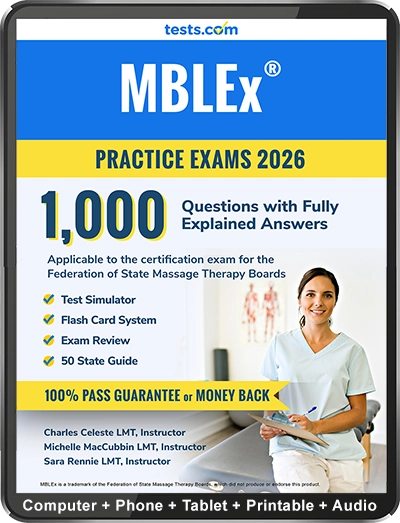2026 Edition
MBLEx Practice Test
Study Online Instantly

Click to Save 50% Now
2026 Edition

Take this free MBLEx practice exam to study for your massage certification test to become a certified massage therapist.
Massage therapists need to obtian a license to practice in most states. In many states, a passing score on the MBLEx is one of several requirements for licensure. This MBLEx practice test includes sample questions from real exam sections: anatomy, pathology, massage techniques and more. The actual exam was developed by FSMTB (Federation of State Massage Therapy Boards) and is administered at test centers across the U.S.
To prepare for the MBLEx, use our 1,000 question MBLEx Practice Test authored by massage therapy instructors, who have all worked in massage therapy for many years. Our interactive test platform allows you to simulate the exam. Take as many practice tests as you need. There's no time limit or recurrent charges.
For more information on the MBLEx, including detailed information on the test's content outline, see the MBLEX Study Guide.
For more free practice questions and test prep, use our other free MBLEx Practice Exam.